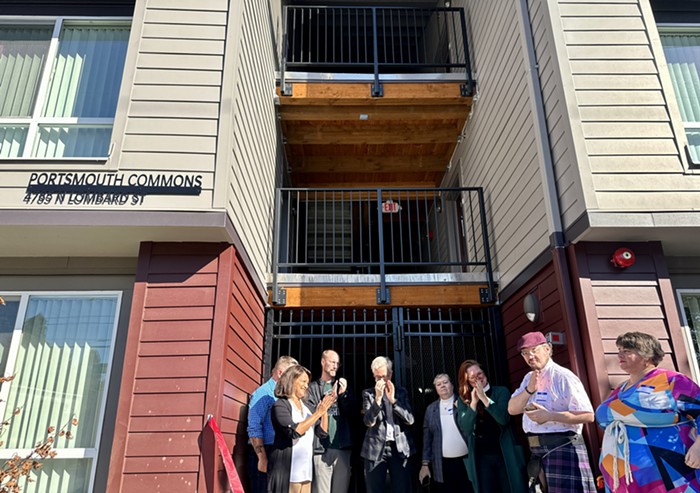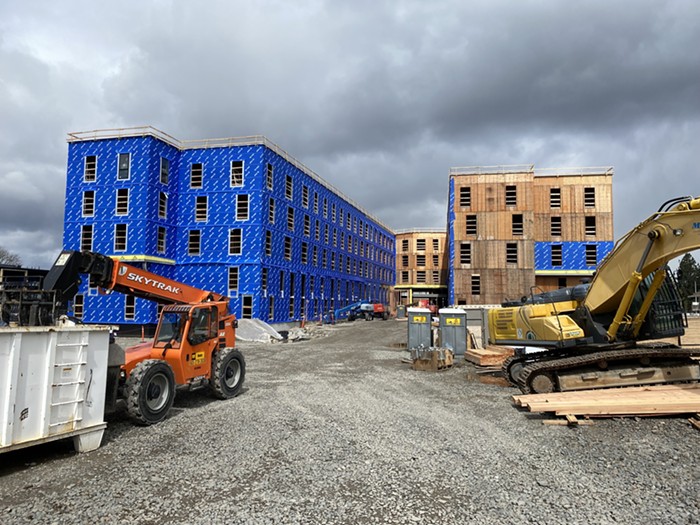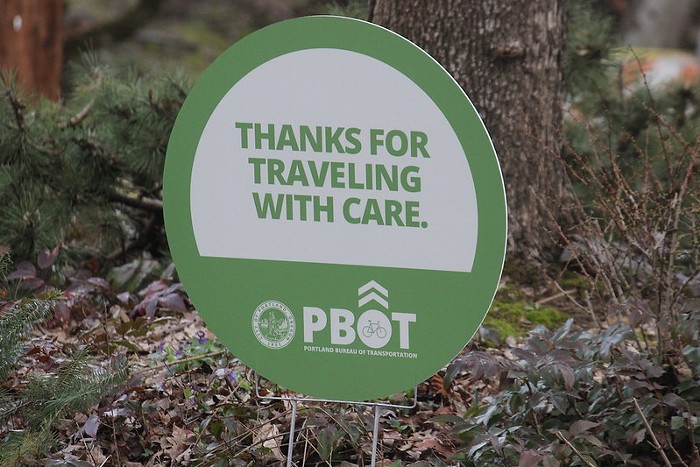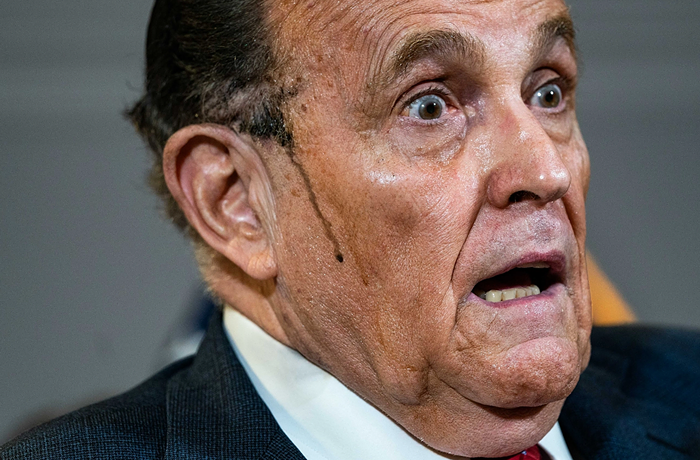IN A PORTLAND that’s rapidly pricing out its poorest residents, the orange and gray high-rise being planned at NW Raleigh and 14th promises a booster shot of affordability.
Set in the bustling Pearl District, the 93-unit, 12-story project touts a price structure strikingly different from the upscale condos that often define the area. Nearly half of the building’s units will be affordable to households making just 30 percent of the city’s median family income ($19,800 per year for a family of three), with 40 of them set aside to house homeless families. The remaining units will be priced for people who make 50 or 60 percent of Portland’s median income.
In other words: One of the city’s hottest neighborhoods is slated to get a sizeable influx of cheap housing—and until November 8, everything was going great.
But with the election of Donald Trump, the Raleigh tower is staring down nearly two million uncertainties. The project’s suddenly facing a big funding shortfall and isn’t sure where it will come up with the money.
“After the election, everyone freaked out,” says Sarah Stevenson, executive director of Innovative Housing, Inc., the nonprofit selected by the City of Portland to develop the building. “The whole market has chilled, and investors aren’t even looking at new deals.”
Stevenson’s organization is far from alone. Overnight, Trump’s surprise victory dramatically altered the landscape for affordable housing projects across the country, creating big holes in funding where none existed before.
The reason is Trump’s campaign promise to reduce the federal corporate tax rate from 35 percent. The pledge has yet to be sketched out in any detail, but it’s already got firms speculating about lower tax bills. That, in turn, makes them less interested in the tax benefits to be gleaned from investing in affordable housing.
Experts say the ultimate fallout could mean billions of federal dollars that once went to affordable housing every year will disappear. In Oregon, housing officials are scrambling to arrive at a strategy for assisting jeopardized projects.
“The bottom line is you will get less housing, and it will be harder to serve lower-income families,” says Michael Novogradac, managing partner at San Francisco-based accounting and consulting firm Novogradac and Company. “There’s no silver lining to having less funds available.”
The financing of affordable housing is complicated. For our purposes, you just need to understand that many projects are reliant on federal Low Income Housing Tax Credits (LIHTCs).
The credits are awarded by states to housing developers, who then sell them for millions to banks and other entities keen on reducing their tax bills. That sales price can cover between 30 and 70 percent of a project. It is necessary money—but it’s now harder to come by.

In the case of the Raleigh project, Innovative Housing was alotted $1.27 million in tax credits from state housing officials. Those credits can be claimed every year for 10 years, meaning a face value of $12.7 million.
Before Trump’s victory, Innovative Housing was counting on a lot more than that. The market for housing tax credits was surging, and Stevenson says she was close to inking a deal to sell the credits for around $14 million—roughly 42 percent of her project’s $33 million price tag.
With Trump in office, the same deal’s no longer on the table. Stevenson says her organization is planning to sell the credits for as low as 90 cents apiece, which would net roughly $11.4 million.
How Innovative Housing makes up the difference isn’t yet clear. The project’s already being financed with $10.7 million in urban renewal money from the City of Portland, and there’s no more where that came from. The nonprofit has performed “value engineering” to reduce construction costs, but it’s not enough.
“We think our gap is about $1.8 million,” Stevenson says. “That is the number we are working to fill.”
The Raleigh project is big, but it’s just one of 27 that the Portland Housing Bureau has in the pipeline, according to PHB Director Kurt Creager. Many of those might now require more city funding.
“We budgeted many of these projects with a cushion, so a downdraft in the market doesn’t necessarily kill the deal,” Creager says. “It does mean we have to dig a little deeper.”
The largest of PHB’s incoming housing projects—a two-building, 379-unit development in Southwest Portland’s Riverplace neighborhood—is among those facing holes, Creager says. A spokesperson for BRIDGE Housing, which is developing the project, declined to go into specifics of a potential shortfall. The project is slated to add 203 affordable units.
Another 59-unit Northeast Portland project geared toward Native American residents is now planning for a gap of more than $2 million, its backers say.
State officials are scrambling to piece together solutions. Oregon’s Housing and Community Services agency anticipates that 33 forth- coming affordable housing projects statewide might be a collective $35 million short of necessary funds due to reduced interest in tax credits.
In response, officials called a special meeting on January 27, in which they considered several strategies to close the gaps—including putting tax credits earmarked for future projects toward papering over existing holes. Such a move might be unprecedented in Oregon, according to Housing and Community Services spokesperson Ariel Nelson.
“We haven’t done this before, and the agency is really just exploring ways to be responsive,” Nelson says.
How seriously Trump’s tax plan will ultimately affect affordable housing funding is an open question—partly because no one knows what the plan looks like. Even if the new administration follows through with campaign promises—slashing corporate taxes to 25, 20, or even 15 percent—Novogradac says he anticipates Congress would be willing to accept fixes that make housing an attractive investment again.
If there are such fixes, though, they’ll take time. That’s not something the Raleigh development has a lot of.
Stevenson is keen on getting the project underway in coming months, noting that construction costs are rising all the time. So are interest rates, which would make borrowing money in the future to close a funding gap more expensive.
And then there’s the actual land Innovative Housing plans to build on. The city purchased the quarter-acre plot from Hoyt Street Properties for $1.3 million in 2015. But there was a catch to the deal [PDF]: If construction doesn’t commence on the plot within three years of the sale, the city has to sell the land back.
“I have that [date] sort of printed on the inside of my eyelids,” Creager says. Then, talking about the nature of housing projects generally, he adds: “This is like a constantly evolving Rubik’s cube where the colors on each side are always changing.”
Related: For the latest in information about rallies, marches, and political events, consult the Mercury's RESISTANCE & SOLIDARITY calendar. Want to publicize an event? Send the info to calendar@portlandmercury.com.
















